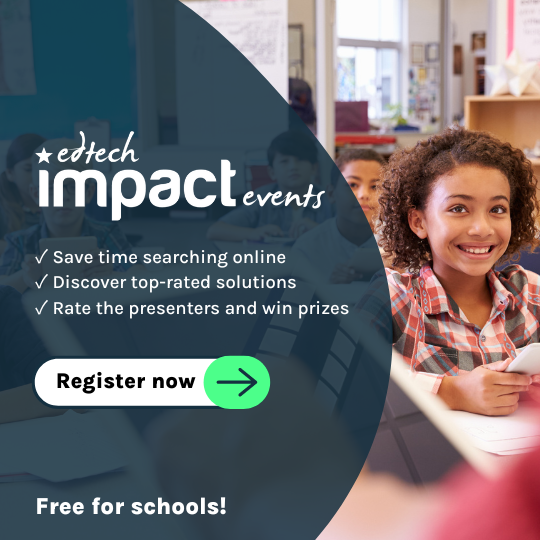Educator insight: Chriss Atkinson, Head of IT, HISP MAT
Many thanks to Chriss Atkinson, Head of IT for HISP Multi-Academy Trust for his thoughts on EdTech and its implementation and use.
This is a full version of the interview that appeared in our schools newsletter of 13 July 2023.
Click here to subscribe and receive this free fortnightly update.

Chriss has responsibility for IT operations and projects. He is currently leading his team through a period of significant growth and development to provide the best possible IT experience for staff and students. With over 15 years’ experience working across multiple academic settings, Chriss is passionate about forensically applying investment to improve teaching and learning.
1. Get it right first time
Take your time to procure the correct resource for your MAT or school. Avoid having to revisit the decision to buy this resource in a year’s time.
Be democratic in your search process. Be sure to include key stakeholders in the decision-making process, particularly those heavy users who may not be in leadership positions.
Develop working parties to drive adoption of any new resource. They can continually champion its use and ensure it forms part of MAT / school culture.
2. Seek different perspectives
Try not to assign responsibility for adoption and oversight of a new resource to one person. They may not be able to drive it forward on their own, and in the worst-case, may leave your organisation and take their knowledge with them.
Don’t exclude professional services departments like IT and estates from the decision-making process. Experts can bring an insight or concern you hadn’t anticipated. Better to identify and remediate in advance.
Avoid short-term thinking. The new resource you are looking at may be fantastic right now, but can you sustain its use and commit to the ongoing financial investment it may require?
3. Delivering change
It’s likely that you will make mistakes! Try not to make any big ones. Try not to make decisions in isolation, but instead speak to people to understand their needs. The best investment is useless without people being on board and playing their part in the journey.
Communicate, communicate, communicate! When adopting transformative systems or practices, it’s easy to overlook the value in keeping people updated. They’ll appreciate you for it, and it makes adoption that much easier.
I always think first from the perspective of the end user (i.e. teacher or student). A new resource may appear perfect to you, but if it isn’t easy to use or doesn’t fulfil the needs of users, then it’s of little use and likely won’t be maintained.
4. An open mind on AI
It’s hard to ignore the explosive entrance of generative A.I. platforms like ChatGPT when thinking about future EdTech trends. Many of us have dabbled, indeed many of us have applied such platforms to our professional working practices already. It will be interesting to see what education focussed resources gain prominence over the next 12 months. We are keeping an open eye and an open mind as to how we can apply these resources to the classroom.
🎒 Chriss Atkinson’s EdTech toolkit…
- Arbor: We are in the process of adopting Arbor across all of our schools. It’s a fantastic system, with a progressive and supportive team, that has reduced our on-site infrastructure requirements and freed up my team’s time!
- Renaissance Accelerated Reader: A fantastic resource for assessment and promotion of pupils’ reading. Detailed reporting, adaptive assessment and clear breakdowns of progress means teachers and pupils are aware of exactly what books will challenge and improve reading ability.
- CPOMS: A brilliant platform for managing safeguarding and behaviour. Easy to set up thanks to a supportive team, incredibly comprehensive whilst still being accessible to all levels of technical ability.
- Sign-In App: This is our preferred visitor management system. It’s responsive, fantastic value and run by a really helpful team.
- SeeSaw: A digital platform built with younger learners in mind. Build up libraries of assessment evidence and curriculum progress, whilst having the ability to tailor lesson plans to different pupils. An absolute game-changer for us with remote learning during lockdown.
- Microsoft Intune: We’re moving at pace towards cloud-first infrastructure and Intune has been revelatory in our management and deployment of school devices.
- ExamWritePad: This is a relatively new one to me, but has been transformational in our controlled assessments. This platform is great for autosaving work, formatting exams correctly and has a range of accessibility features that aid students.
- Microsoft Teams: Teams has given us the ability to seamlessly move from classroom based to remote learning without too much difficulty. For example, during the recent industrial action we’ve been able to offer a similar level of pupil-teacher interaction.
- Scratch (& Scratch Jr.): It’s almost ubiquitous in KS1+2 computing education, but that’s for a reason. It’s accessible, visual and really very powerful when used correctly. I’ve taught many a lesson using Scratch, and aside from delivering on the computer science curriculum, it’s also fantastic for building resilience and teaching problem solving.
- Visualisers: We use high quality visualisers in almost all of our schools as a tool to display, annotate and generate discussion around visual resources, whether that be annotating passages of text or topological features on a map.
Updated on: 13 July 2023

